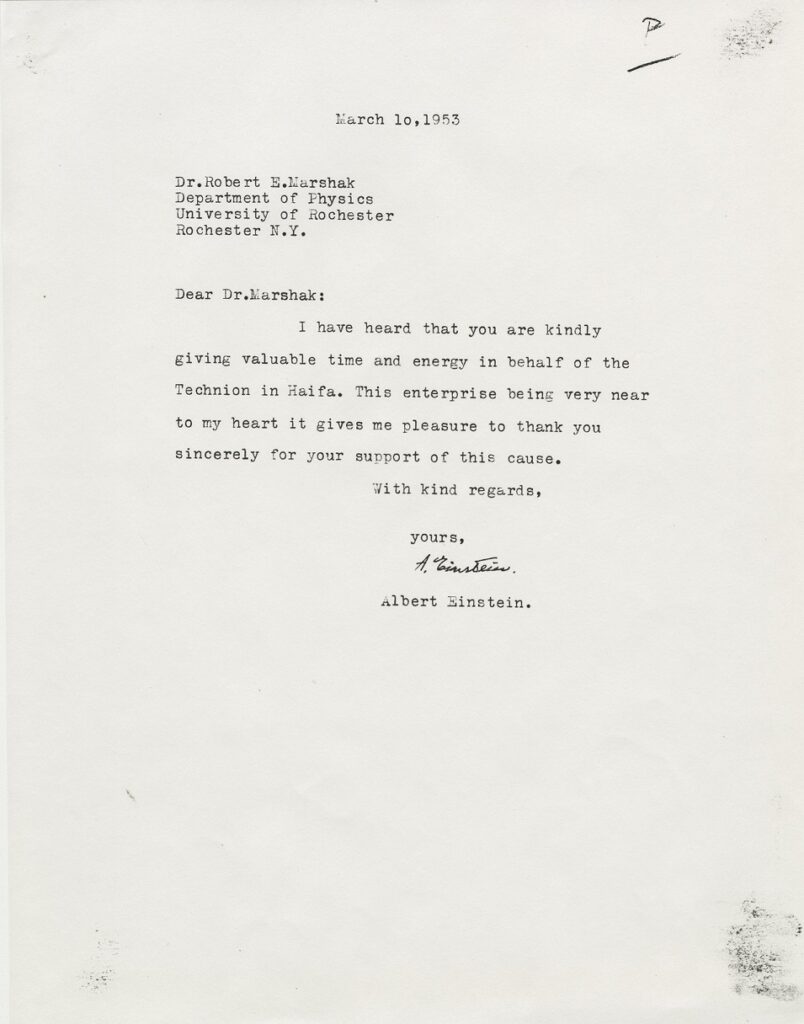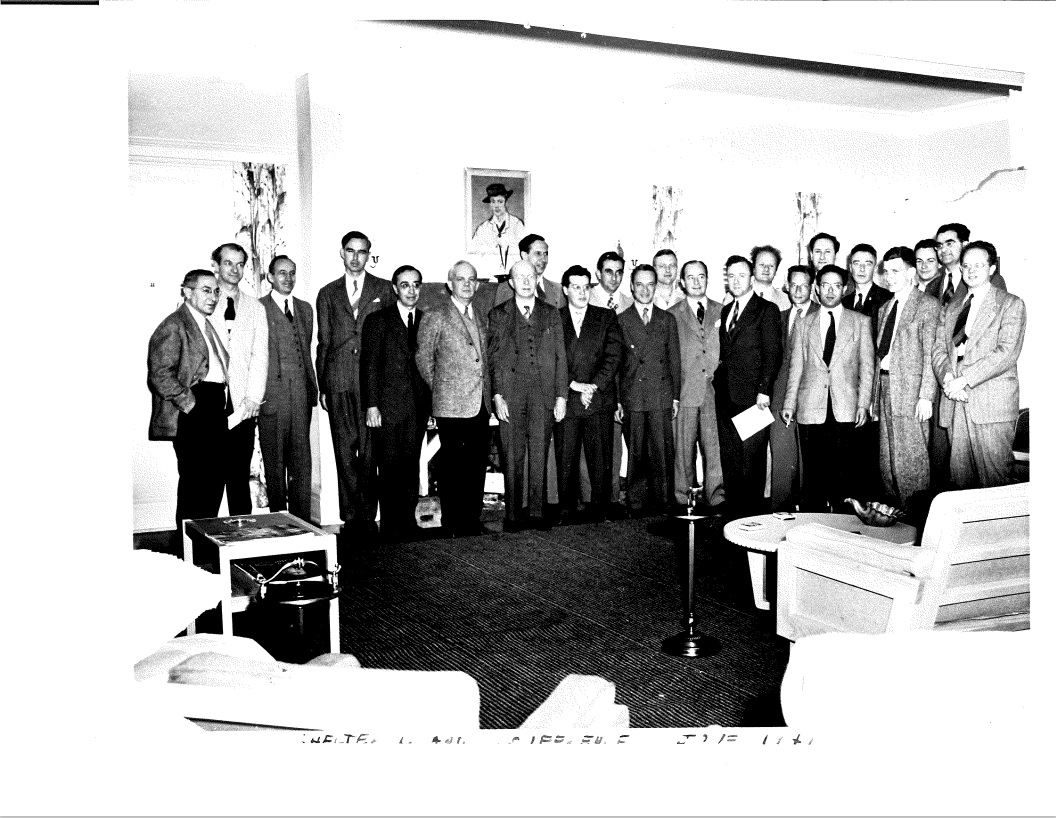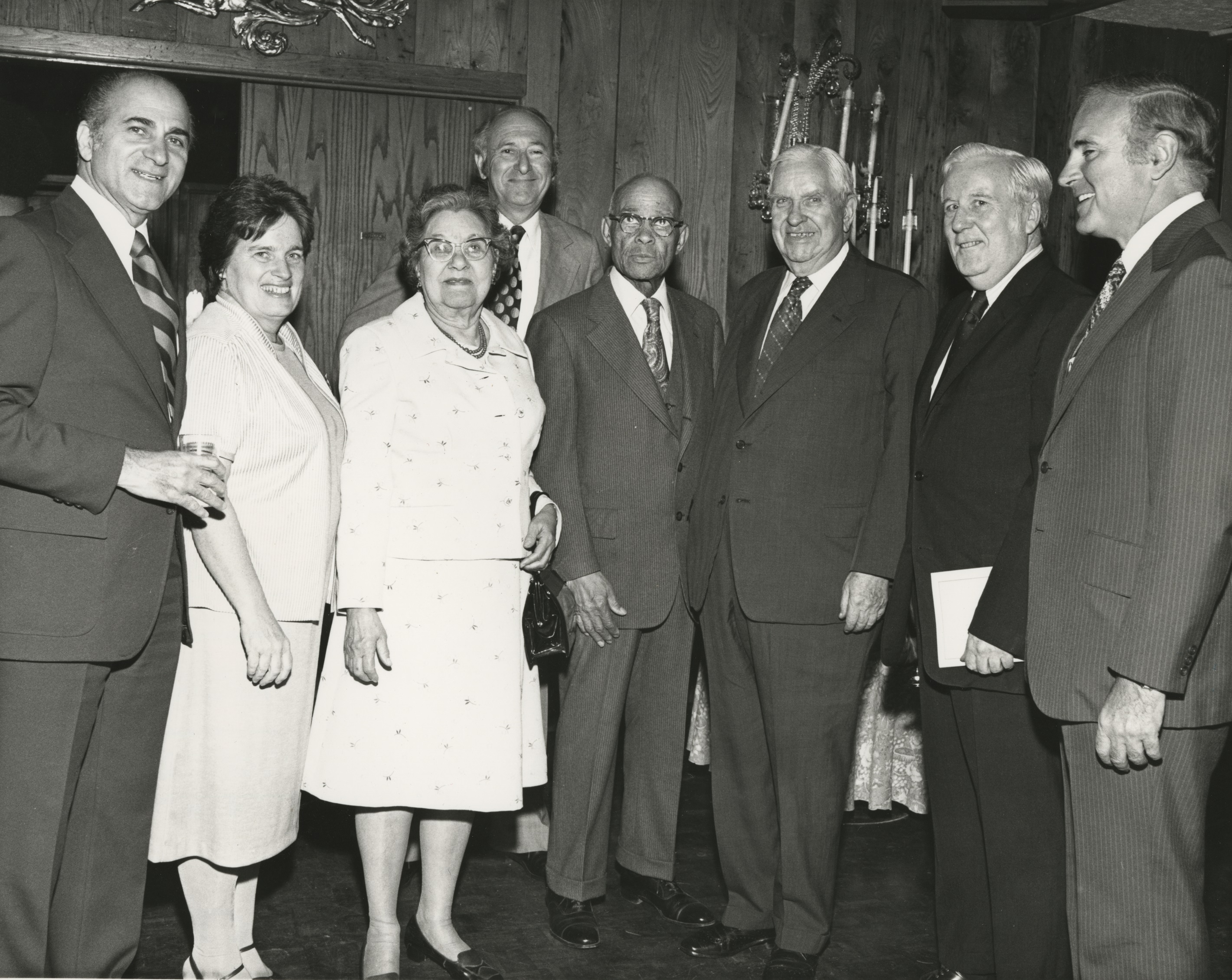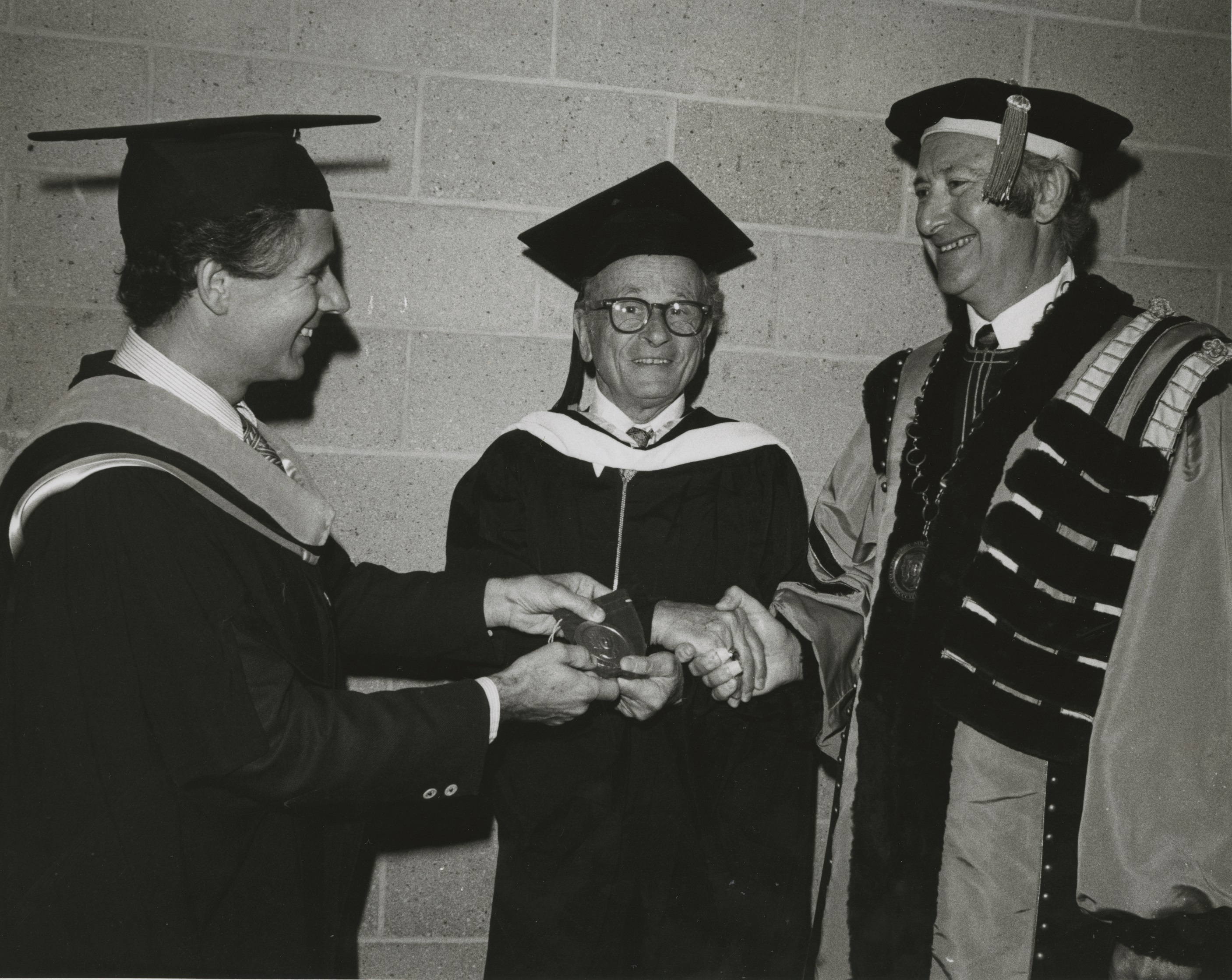![]() Robert Eugene Marshak was born October 11, 1916 in the Bronx in New York City to Jewish immigrant parents Harry and Rose Marshak. He excelled at school, attending City College of New York for a brief time before finishing his undergraduate degree at Columbia University. He then went on to receive his PhD in Physics from Cornell in 1939. He and his thesis advisor, Hans Bethe, researched the role of fusion in star formation. This work landed him a spot on the Manhattan Project in Los Alamos a few years later, where he assisted in the development of atomic weapons technology. Of particular note were his contributions to our understanding of how shock waves behave during high energy events such as nuclear explosions, which led to such waves being known as “Marshak waves”.
Robert Eugene Marshak was born October 11, 1916 in the Bronx in New York City to Jewish immigrant parents Harry and Rose Marshak. He excelled at school, attending City College of New York for a brief time before finishing his undergraduate degree at Columbia University. He then went on to receive his PhD in Physics from Cornell in 1939. He and his thesis advisor, Hans Bethe, researched the role of fusion in star formation. This work landed him a spot on the Manhattan Project in Los Alamos a few years later, where he assisted in the development of atomic weapons technology. Of particular note were his contributions to our understanding of how shock waves behave during high energy events such as nuclear explosions, which led to such waves being known as “Marshak waves”.
After the war, Marshak returned to New York to take up a position in the Physics Department at Rochester University in Rochester. In 1947, as a participant in the Shelter Island Conference, Marshak presented a hypothesis theorizing the existence of a new class of subatomic particle, which was shortly to be confirmed. After becoming head of the University of Rochester Physics Department in 1950, Marshak established the Rochester Conference, now known as the International Conference on High Energy Physics, which still meets to this day. His work on weak interactions was instrumental to establishing the electroweak theory, which won Richard Feynman and Murray Gell-Mann a Nobel Prize. (Note: This statement regarding Feynman and Gell-Mann Nobel Prizes is incorrect. See correction in the comments.)
It is unclear what Marshak’s beliefs were before World War II, but, following his work on the Manhattan Project, he became a staunch supporter of open science and an end to the militarization of science and technology. He worked tirelessly to enhance scientific communication, protest nationalist scientific policies, and promote peace. While people who knew him frequently described him as being prickly, arrogant, and difficult to work with, he nevertheless used his position and renown within his field to support and advocate for scientists who found themselves persecuted by their own governments. He maintained an active correspondence with physicists and scientists all over the world and attended conferences, symposia, meetings, and workshops to learn and share his own knowledge.

In 1970, he was offered the position of President at City College of New York, which he had once attended. He accepted, and ran the school for 9 years. As time wore on, he found he missed physics and teaching, so in 1979 he took up the position of University Distinguished Professor of Physics at Virginia Tech, where he stayed until his retirement in 1991. In 1983, while at Virginia Tech, he also served a year-long term as President of the American Physical Society, which is the largest organization of American physicists.
One incident in particular highlights Marshak’s commitment to scientific freedom and openness. Andrei Sakharov was a nuclear physicist from the Soviet Union. His life had a similar trajectory to Marshak’s. He too worked on nuclear technology for his country, and he too came to believe that weaponizing science was a sure path to war and destruction. However, his life turned out much differently than Marshak’s. In the 1950’s and 60’s, Sakharov began to advocate for peace and an end to nuclear testing. He became a well-known dissident within his own country, work which would eventually lead to his arrest, exile, and a Nobel Peace Prize. It is during this period where his story intersects with Marshak’s. In Marshak’s papers, one can trace the American’s growing concern with the danger and persecution facing his Soviet colleague, as well as his efforts to bring the situation to the attention of the global community and prevent harm from coming to Sakharov, who by now was known much more for his political actions than for his work as a physicist. Marshak did not face such overt threats, but his support of and communication with Soviet scientists throughout the Cold War period brought him under scrutiny at a time when the specter of communism made any connection to the USSR a dangerous one. He was forced to undergo several investigations by the House Un-American Activities Committee as a result of his work. Despite this, Marshak never stopped being an advocate for the peaceful sharing of science and technology.
![]()
This only skims the surface of Marshak’s papers. The finding aid for his collections can be found here.
This project was supported by a grant from the American Institute of Physics.



In your article, you say of Marshak: “His work on weak interactions was instrumental to establishing the electroweak theory, which won Richard Feynman and Murray Gell-Mann a Nobel Prize.”
Unfortunately the second half of this sentence is incorrect. Neither Feynman nor Gell-Mann won the Nobel for electroweak theory. Feynman’s (awarded together in 1965 with Schwinger and Tomonaga) was for the first quantum theory of electromagnetic interactions, quantum electrodynamics. The theory which unified electrodynamics and the weak interaction came much later than Feynman’s work, and it won Glashow, Weinberg, and Salam (not Gell-Mann) the Nobel in 1979. Gell-Mann’s Nobel came in 1969, and was for his work on the quark model and the strong interaction.
You might wish to correct this factual error in your article. It appears you may have gleaned information for this article from Wikipedia, which is notoriously inaccurate. The connection there in the article on Marshak that is made between electroweak theory and the Nobel Prizes won by Gell-Mann and Feynman is just not correct. Their prizes had nothing to do with V-A theory or electroweak physics.
Thank you very much for your correction. I have updated the post to include a note about the factual inaccuracy and direct readers to the comments for your excellent correction.